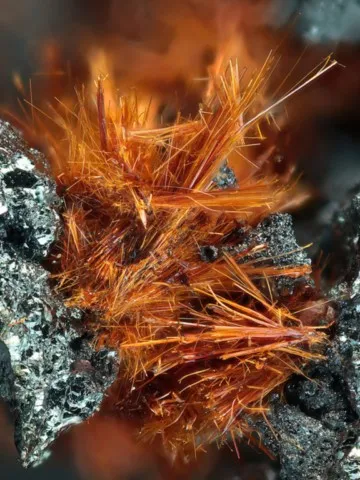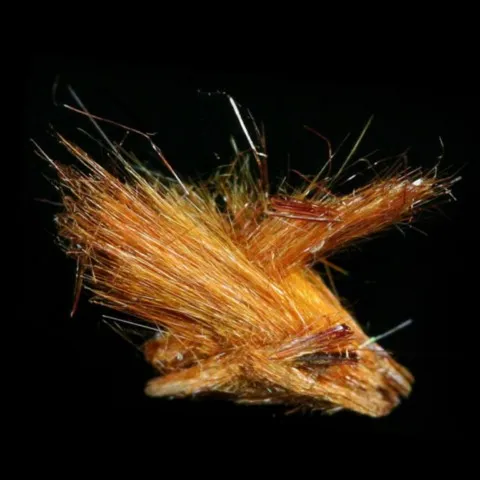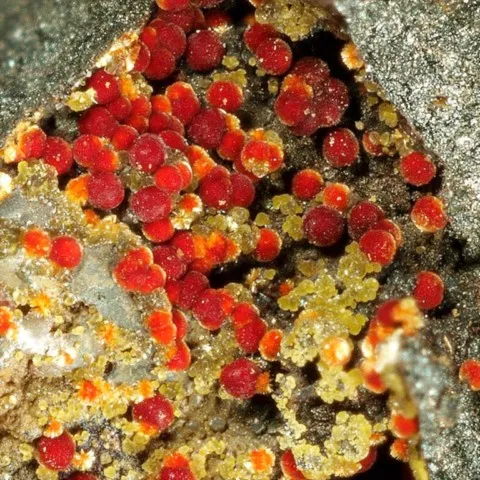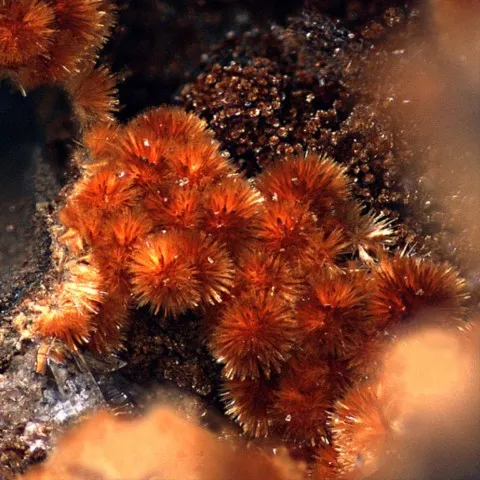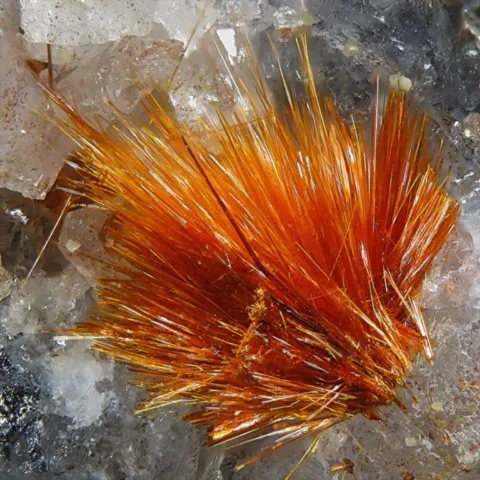LUDLOCKITE
Class : Oxides and hydroxides
Subclass : Arsenites
Crystal system : Triclinic
Chemistry : PbFe4As10O22
Rarity : Very rare
Ludlockite is an extremely rare complex oxide of arsenic, iron and lead. It is a secondary mineral known in the oxidation zones of polymetallic deposits as well as in the slag of lead ores. It was named in honor of two American mineral collectors and dealers from New Jersey, Frederick Ludlow Smith and Charle Locke Key, who discovered the mineral in Tsumeb (Namibia). Ludlockite is generally fibrous and forms under the microscope elongated lamellae united in divergent sheaves, more rarely prismatic crystals with a square section, 4 cm in maximum length, of an orange-brown to brownish red color.
Main photo : Ludlockite from Tsumeb, Oshikoto, Namibia © Elmar Lackner
Ludlockite in the World
Twinning
Lamellar twins on {0-11} are common.
Fakes and treatments
No fakes recorded for this mineral species.
Hardness : 1.5 to 2
Density : 4.33 to 4.40
Fracture : Undeterminated
Streak : Light brown
TP : Translucent
RI : 1.960 to 2.110
Birefringence : 0.150
Optical character : Biaxial +
Pleochroism : Visible
Fluorescence : None
Solubility : Aqua regia
Magnetism : NoneRadioactivity : None

